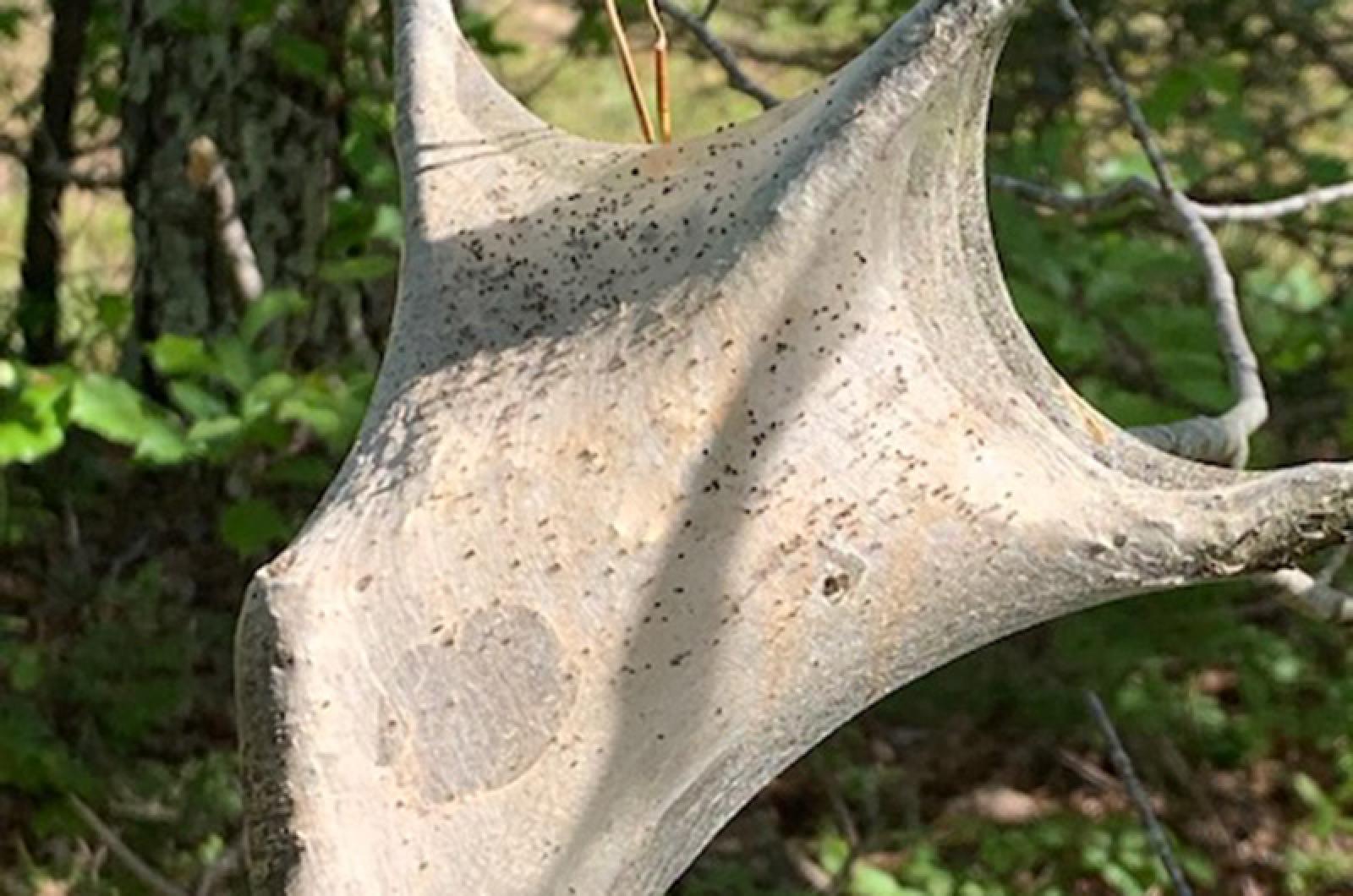Pat Tyra of Edgartown wants to know who to call. Would it be the animal control officer, the public works department, a landscape company, or a pest control professional?
Actually, none of the above would be quite right for her problem. Her best option is to tiptoe tentatively, live and let live, be patient and look to nature for a solution.
Pat’s predicament is the profusion of caterpillar tents along the trees overhanging roads, sidewalks and trails. It is hard to miss these white, silken shelters in the crotches of tree branches, housing a whole lot of creepy crawlers. Inside are hundreds of residents ready to burst forth (if they haven’t already) and cover the lanes and paths with hairy, moving masses.
Some tent caterpillars have flown the coop and are out and about, feeding. They prefer fruit trees, including our wild cherries, apples, crabapples and plums; and tend to build their tents on the south or sun-facing sides of the trees to maximize spring sun. As we move into summer, and as these caterpillars grow, they emerge from the tents in the morning, evening and at night to feed on the leaves of their host trees.
Those tents are worth a close look, if you can overcome the initial ick factor. The structures are composed of integrated layers, allowing the caterpillars to maintain their body temperatures by moving between the layers, and even provide them the option of hanging out (literally) outside of the tents when temperatures become too high in these insulated shelters.
However, after seven to eight weeks, the full-grown adults leave their confines and drop to the ground below and around their natal tree before seeking a protected location to form their cocoon. The cocoon will hatch a nondescript moth that will begin the egg-laying process and caterpillar cycle anew.
While caterpillars roam, we can call on their predators (and not wildlife professionals) for help. Many animals will eat these caterpillars. And at least in one case, that consumption is to the detriment of the predator.
There are birds that love these protein-packed parcels and thrive on them. Songbirds — including robins, cardinals and red-winged blackbirds — will partake as will those testy turkeys and even waterbirds such as ducks. Mammals won’t decline a tent caterpillar tasting, either: squirrel, fox, raccoon, mice, chipmunks, shrews and even bats will have a bite. Reptiles and amphibians can’t resist: box turtles, garter snakes and American toads are all intent on tent caterpillars as well. And even if eastern tent caterpillars avoid those bigger beasts, they also must evade the parasitic wasps and viruses that target them if they are to survive.
But do keep your horse, donkey, or mule away from these caterpillars: the consumption of them by these species can cause Mare Reproductive Loss Syndrome (MRLS). If a mare eats these caterpillars, the setae (hairs) of the caterpillar can penetrate her reproductive system, which can allow bacteria to proliferate and abort a late-term fetus. Horse owners take notice.
The good news for Pat and others that curse these little beasts as they dangle overhead and squish underfoot is that their populations are cyclic. Every nine to sixteen years, eastern tent caterpillars peak and then decline. With this big year, we can hope that next year will be more of a bust than a boom cycle. For now, we will have to coexist; after all, no one wants to answer that caterpillar clean-up call.
Suzan Bellincampi is islands director for Felix Neck Wildlife Sanctuary in Edgartown and the Nantucket Wildlife Sanctuaries. She is also the author of Martha’s Vineyard: A Field Guide to Island Nature and The Nature of Martha’s Vineyard.







Comments
Comment policy »